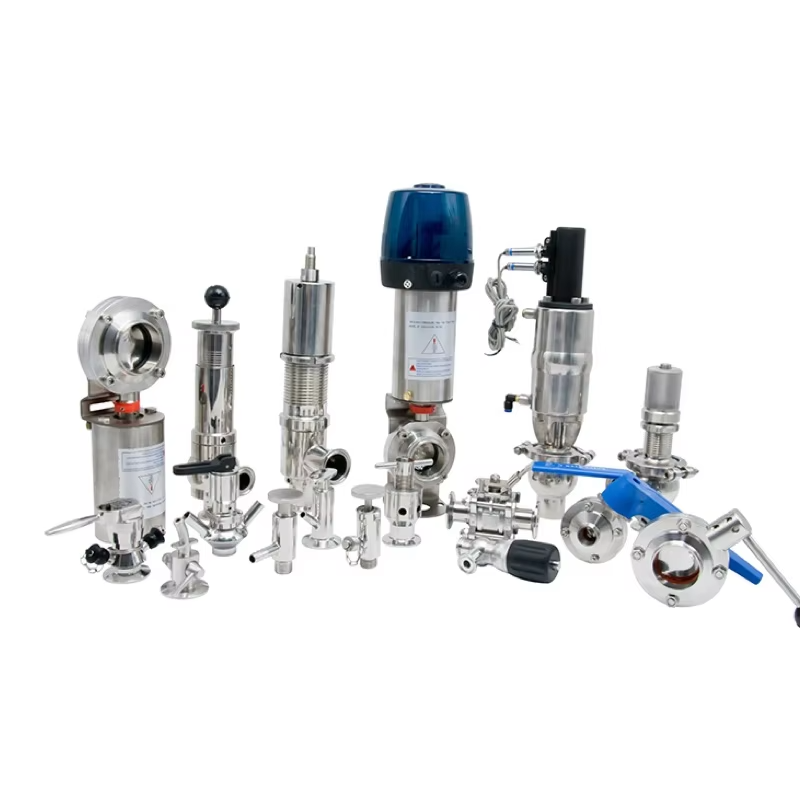+86 15858532562
Views: 0 Author: Site Editor Publish Time: 2025-09-11 Origin: Site








Stainless steel diverter valves are essential components in fluid control systems, designed to redirect flow between multiple pathways without requiring separate valves for each direction. Their operation relies on a combination of mechanical movement and fluid dynamics to achieve efficient flow switching, making them invaluable in processes requiring multi-directional control.
A typical stainless steel diverter valve consists of a single inlet port and two or more outlet ports. The core components include:
Valve Body: Manufactured from corrosion-resistant stainless steel (e.g., 304 or 316 grade) to ensure durability in aggressive environments.
Rotating Mechanism: A disc, ball, or plug that rotates or shifts internally to align with different outlet paths.
Sealing Elements: Often made of PTFE, EPDM, or other elastomers to ensure leak-tight closure.
Actuation System: Manual handles, pneumatic actuators, or electric motors that control the movement of the internal mechanism.
The valve functions by reorienting its internal component to connect the common inlet to one of the outlet ports. In L-type diverter valves, the flow path is switched between two directions at a 90° angle, while T-type valves allow flow splitting or mixing between three ports. The actuator rotates the internal element (e.g., a ball or disc) to precisely align with the desired outlet, ensuring minimal pressure drop and turbulence during transition.
Diverting Mode: Directs fluid from one inlet to one of two outlets (e.g., sending product to Packaging Line A or B).
Mixing Mode: Combines flows from two inlets into a single outlet (e.g., blending hot and cold water).
The valve’s design ensures no cross-contamination between streams during switching.
Manual Operation: Handles or levers allow operators to physically adjust the valve position.
Automated Actuation: Pneumatic or electric actuators enable remote control, programmed timing, and integration with PLC systems for seamless process automation.
Sealing Integrity: Advanced sealing materials prevent leakage between ports, crucial in hygienic or hazardous applications.
Pressure Management: The valve must withstand system pressure without deformation, especially in high-pressure environments like steam systems.
Material Compatibility: Stainless steel construction ensures resistance to corrosion, abrasion, and extreme temperatures.
Food & Beverage: In CIP systems, the valve diverts cleaning solutions between tanks without contamination.
Pharmaceuticals: Ensures sterile transfer of ingredients between reactors via automated flow switching.
Water Treatment: Directs water between filtration units during backwashing cycles.
HVAC: Mixes hot and cold water streams to maintain precise temperature control.
The use of stainless steel provides:
Long-term corrosion resistance in acidic, alkaline, or chloride-rich environments.
Smooth surface finish (e.g., Ra ≤ 0.8 μm) for hygienic applications, preventing bacterial adhesion.
Mechanical strength to handle high cyclic operation without failure.
Conclusion
The working principle of stainless steel diverter valves revolves around precise mechanical reconfiguration of flow paths through robust internal mechanisms. Their efficiency lies in simplifying complex piping systems, reducing equipment needs, and enabling automated, multi-directional control. By combining stainless steel’s durability with versatile actuation options, these valves ensure reliability in industries ranging from pharmaceuticals to energy, where accurate flow management is critical.
